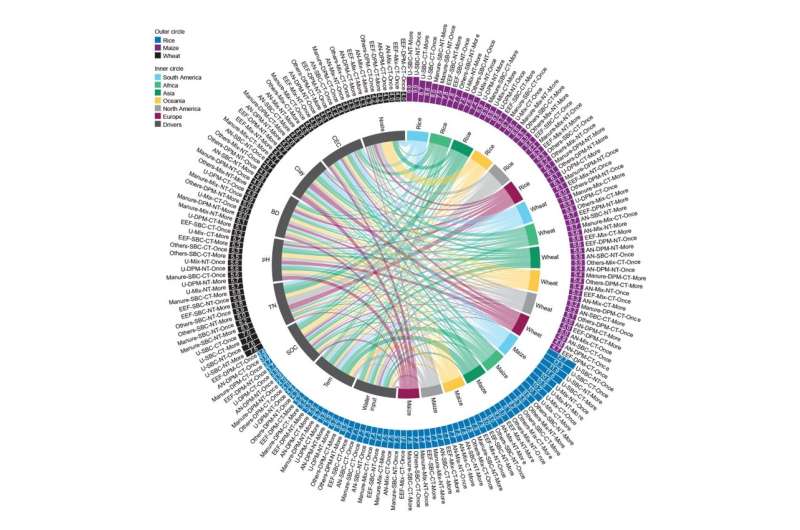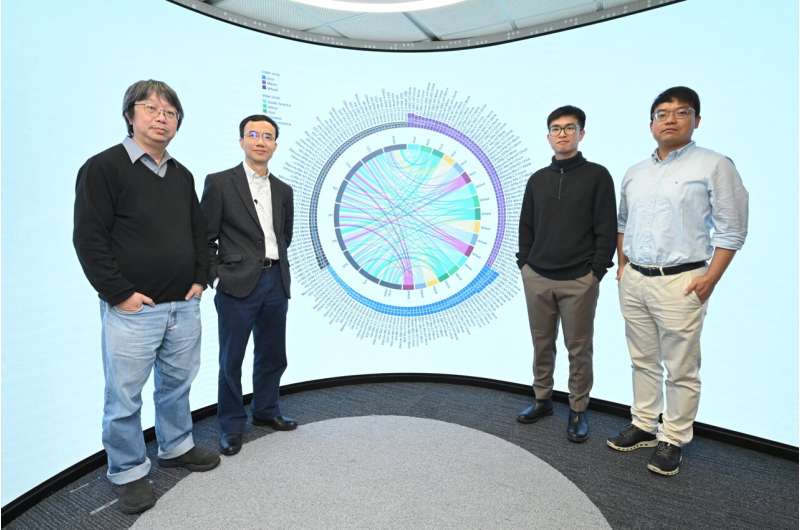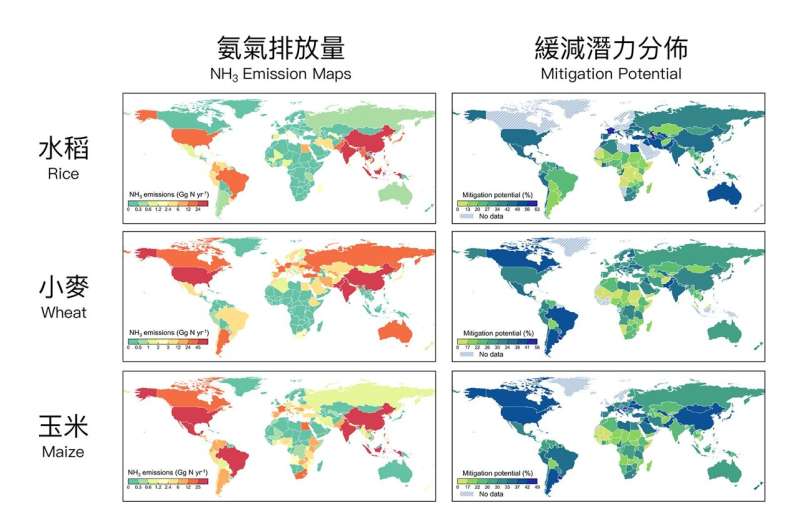This groundbreaking study not only reveals that global NH3 emissions from cropland are lower than previously estimated, but also demonstrates optimizing fertilizer management can effectively reduce emissions by approximately 38%. Credit: HKUST
An international research team led by the Hong Kong University of Science and Technology (HKUST) has achieved a significant breakthrough by developing an artificial intelligence (AI) model that can help mitigate global ammonia (NH3) emission from agriculture.
The study, titled "Fertilizer management for global ammonia emission reduction", has been published in Nature.
Harnessing the power of machine learning, this groundbreaking study not only revealed that global NH3 emissions from cropland are lower than previously estimated, but also demonstrated how optimizing fertilizer management can effectively reduce emissions by approximately 38%, without compromising the overall use of nitrogen fertilizers.
It provides valuable insights for policymakers worldwide to address the United Nations' Sustainable Development Goals related to poverty eradication, food security, and sustainable agriculture.
The release of NH3 from various agricultural and industrial processes could cause air and water pollution, damaging the ecosystem and posing threats to human health. While NH3 itself is not a greenhouse gas, it can react in the soil and atmosphere, forming compounds like nitrous oxide, a potent greenhouse gas that contributes to climate change.
Notably, the production of three major crops—rice, wheat and maize—account for more than half of the global cropland NH3 emission.
As the demand for food increases amid the world's population growth, it has become crucial to discover ways of reducing these emissions for sustainable development. However, the lack of accurate global-scale information makes it challenging for countries to implement effective emission reduction strategies tailored to their specific conditions.
(From left) Prof. Alexis LAU, Head and Chair Professor of the Division of Environment and Sustainability; Prof. Jimmy FUNG, Chair Professor of the Division of Environment and Sustainability in the Academy of Interdisciplinary Studies and Department of Mathematics; Mr. LI Geng, Ph.D. student of the Division of Emerging Interdisciplinary Areas and Dr. Zhang Xuguo, Research Associate of the Department of Mathematics. Credit: HKUST
To address this challenge, a research team led by Prof. Jimmy Fung Chi-Hung, Chair Professor of HKUST's Division of Environment and Sustainability in the Academy of Interdisciplinary Studies and Department of Mathematics, and Prof. Zheng Yi from the School of Environmental Science and Engineering at the Southern University of Science and Technology (SUSTech), collected and compiled a dataset based on field observation data of NH3 emission rates spanning between 1985 and 2022.
They subsequently trained an AI-powered computer model to estimate global NH3 emissions using the dataset while considering various geographical factors such as climate, soil characteristics, crop types, irrigation water, fertilizer, and tillage practices.
NH3 emission maps and mitigation potential of three major crops—rice, wheat, and maize. Credit: HKUST
This model is capable of generating customized fertilizer management plans for different regions. For instance, in Asia, around 76% of wheat land is suitable for using enhanced-efficiency fertilizers (EEFs) to reduce NH3 emissions due to the influence of global warming, as temperature plays a pivotal role in NH3 emission from wheat land in Asia.
More information: Peng Xu et al, Fertilizer management for global ammonia emission reduction, Nature (2024). DOI: 10.1038/s41586-024-07020-z
Journal information: Nature
Provided by Hong Kong University of Science and Technology

























